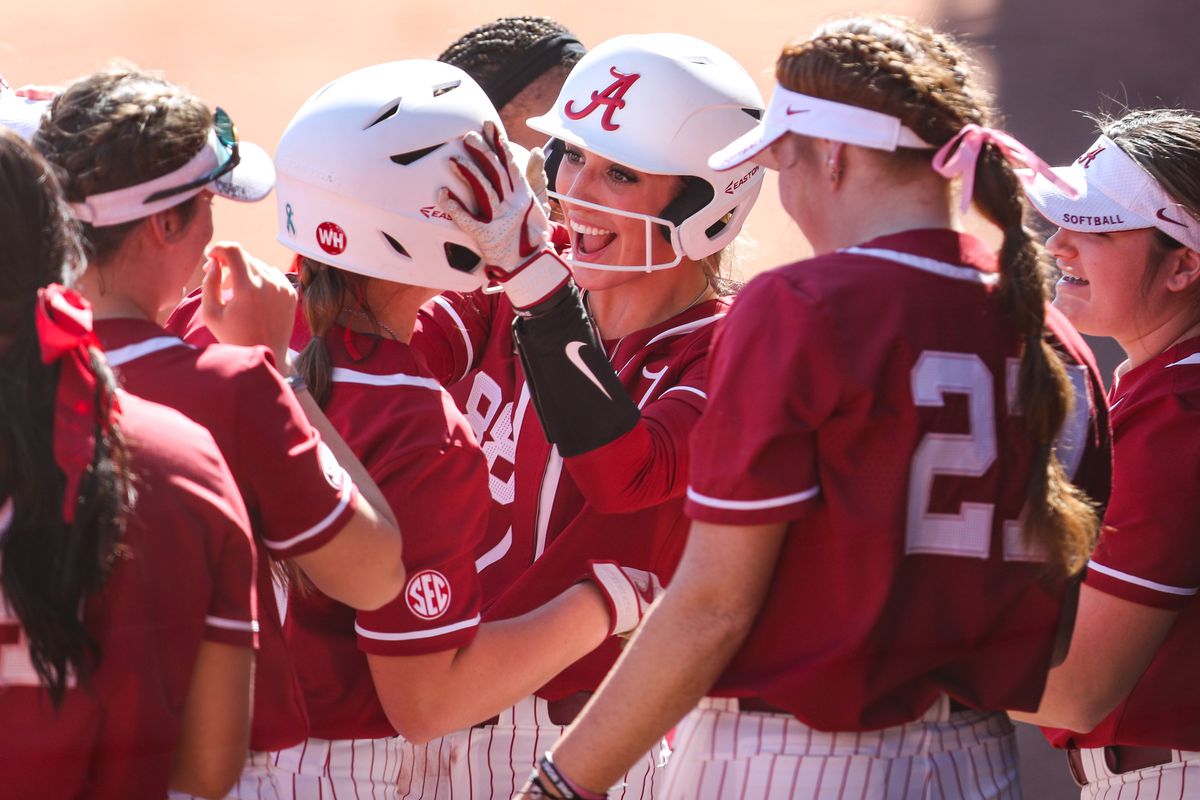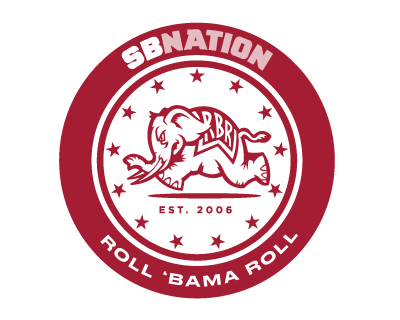
Ordinarily CB handles our Softball coverage — and he always has much to say and more. However, I’m skating in to do what I do best: crunch numbers to figure out the whys. And today the question is why 6th-seed Alabama, comes limping into WCWS play at Rhoads having lost 5 of the last 8 contests, sporting its third-worst SEC record in the last decade, and its first First-Round SECT exit in over two decades?
The answer is simple, but the solution is not: This is a bad offensive team that has somehow played way above its head, and leaned on the overworked arm of Montana Fouts, to reach its 41-11 record.
How grisly was it? In its last 10 games, the Tide have plated no more than 4 runs in any contest. You have to go back a literal month (April 18th vs. Alcorn State) to find another instance where Alabama has reached more than 4 runs. The national scoring average for all teams is 5.08 runs per game. In 29 of Alabama’s 52 games, Alabama went below that. And, even when the Tide was winning, it wasn’t exactly explosive. In 10 of ‘Bama’s 41 wins, Alabama plated 3 or fewer runs.
With functionally the same core returning team, Alabama has seen seriously diminishing results over last season. In 2021, Alabama was involved in 14 run-rule games: it won all 14 of them en route to a 52-9 season and a disastrously-mismanaged Super Regional exit to Florida State. This season, Alabama has been involved in half as many, and none in the last two months... except the beating that Texas A&M inflicted on them. Overall, the Tide run-ruled one opponent, one time. Last year, Alabama notched five in-conference beatdowns.
Individually, only Ashley Prange is in the SEC Top 20 for batting average (15th); only Bailey Dowling is the Top 20 of OBP (19th); Prange is the only player in the Top 20 of slugging (13th) and OPS (12th); only Prange has been in the Top 20 at drawing walks (11th); only Ally Shipman is in the Top 20 of RBI; freshman Dallis Goodnight leads Bama in stolen bases with 17 (the conference leader is UF’s Skyler Wallace at 47); and the Tide has no one in the Top 20 of runs or hits. Not a single Bama player has double-digit home runs. In fact, Bama’s top three power hitters (Prange, Dowling, Shipman) have 27 home runs...total. The conference leader, MSU’s Mia Davidson has 21.
As a team, it looks far worse. In the SEC, Alabama is dead last in at-bats, in runs scored, in hits, in RBI, and total plate appearances. It is next-to-last in total bases. It is has grounded into the 3rd-most DP. The two things Bama have been good at is not striking out (best in the conference) and sac bunts (2nd with 30 — insert your own jokes).
All in all, you see a team that doesn’t reach the base paths with either their bats or plate discipline; one that can’t hit for power; that tries to swipe bases and keep pitchers occupied but are just middling at doing so; and one that at the end of the day doesn’t push runners across when they do get on base.
The anemic offense was disguised earlier in the season by Alabama leaning on its pitching to finish close games (as defined by a save opportunity of 3 runs or less). In their first 12 close contests, Alabama went 12-0. It would not be until March 29th that Alabama could not get it done in a close ballgame.
But then something troubling began to happen. The pitching was getting touched up a bit more (injuries and fatigue do happen), and the offense simply could not get on the board. From March 29th until the present, the Tide went 7-6 in close games — not coincidentally, about the same time the offense noticeably vanished. And “noticeable” is the operant word here, because the Tide’s offense was just not good this year.
—
Alabama is a bad offensive team, and there simply aren’t many answers at the moment, except a fundamental rethink of the Tide’s approach. While Alabama leads the SEC in practically every meaningful pitching category and is second in fielding, this isn’t 1995 and Murph isn’t Bobby Cox. The nation’s most dominant teams are winning with power, and this Alabama program simply has none at the moment.
This isn’t meant to be descriptive and critical so much as prescriptive. The facts are what they are.
But Alabama’s brand of small ball leaves no margin for error. The pitching has to be outstanding every single night, and anything less than that puts the onus on an offense that must manufacture a run or two so as to bail out the arms. It has worked more often than not over Murphy’s almost-30-year tenure. But there are winds of change that have been ongoing in the game since 2014. Those epic 1-0 and 2-1 WCWS aren’t what fills the trophy case. Good pitching is still a must, but far more important is the ability to get runs on the board and not require four months of absolute perfection in the circle and in the field.
Thus, while Coach Murphy’s tried-and-true approach has and generally will always allow for Alabama to be an elite team, it is also one that is ultimately doomed to fail in the trophy case. Because it also a style of play that not only has allowed the rest of the SEC to catch up, and catch up they have. Perhaps most emblematic are the Arkansas Razorbacks, were a steady .500 team just 3-4 years ago. But by emphasizing power, have won back-to-back conference titles, an SEC Tournament championship, have the SEC OPOTY (‘Bama’s former KB Sides) and the SEC COTY. And the Hogs have done that with quick three-year rebuild.
And, more importnantly, the perfection required of small ball has proven to be disastrous when it most counts, when the Tide cannot get crucial runs across the plate when it matters the most: the postseason. Simply putting the ball in play is no longer enough.
Because, In Oklahoma City, everyone has got an ace. But only those that can hit for power survive and advance.
Just ask Florida State.

Loading comments...